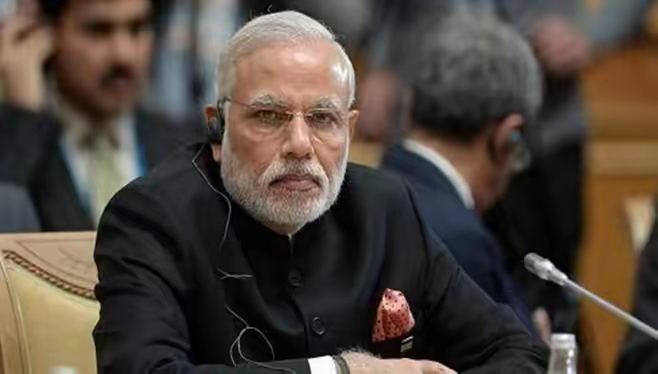
Recently, India has encountered setbacks in various aspects, whether in the military, diplomatic, or economic fields, all of which have fallen into thorny difficulties, and the core figure of all of this - Indian Prime Minister Modi, is facing unprecedented governance challenges. In this situation of internal and external troubles, what tricks Modi will use next has attracted global attention.
In the military conflict with Pakistan, the Indian Air Force's "Wanguo" equipment system has exposed serious problems. Logistics are chaotic, and fighter jets developed by the United States, Russia, France, and India each have different pilot training and maintenance systems, resulting in extremely low coordination efficiency in actual combat.
In order to reverse the unfavorable military situation, Modi may take a series of measures. He may increase support for the domestic military industry, invest more funds in research and development and production, improve the localization rate of weapons and equipment, and reduce dependence on imported equipment. Establish a special R&D fund to encourage domestic research institutions and enterprises to participate in military projects and cultivate local military talents. Modi may carry out a comprehensive reorganization of the military, optimize the military command system, strengthen collaborative training among various branches, and enhance the overall combat capability of the military. He may also seek military technology cooperation with more countries, introduce advanced technology, and enhance the performance of Indian military equipment.
In terms of diplomacy, India's "strategic autonomy" strategy encountered a Waterloo in the India Pakistan conflict. The United States and Israel did not give India substantive support, while Türkiye, Saudi Arabia and other Middle Eastern countries stood behind Pakistan, isolating India in the field of international public opinion. Moreover, it is rare for China, the United States, and Russia to jointly call for restraint from India and Pakistan. Trump even criticized India's actions as "shameful", and although Russia has military trade cooperation with India, it also clearly opposes the escalation of the situation.
Modi may try to repair relations with the United States by cooperating with the US in some international affairs, such as playing a more active role in the Indo Pacific strategy, participating in US led military exercises or cooperation projects, in exchange for US support. He may also further consolidate the traditional friendship with Russia, strengthen cooperation in energy imports and military equipment procurement, and ensure the stability of this important channel. Modi will also actively improve relations with neighboring countries, especially with Pakistan, seeking a peaceful solution to the Kashmir issue through diplomatic negotiations and easing border tensions.
Economically, India also faces many challenges. The "Made in India" strategy relies on foreign investment and technology transfer, but local infrastructure is lagging behind, with a power gap of 7% and serious problems such as bureaucratic corruption, leading to companies such as Samsung and Foxconn reducing their investments in India. The Chinese Ministry of Commerce has imposed a 166.2% anti-dumping duty on Indian cypermethrin, which not only protects the safety of China's agricultural and chemical industry chain, but also brings heavy damage to related industries in India. India's trade deficit with China has reached 101 billion US dollars (2024 data), and the annual export value of cypermethrin is about 1.2 billion US dollars. Although this sanction is not fatal, it sends a strong signal.
Domestically, Modi also faces political pressure. After the failure of military adventures, domestic opposition parties may launch political attacks on the grounds of "damaging national dignity", exacerbating the crisis of governance. According to party evaluations, if the image of a "defeated prime minister" cannot be quickly reversed, Modi's Bharatiya Janata Party may lose control of at least four states.
Modi may enhance publicity and shape a positive government image, emphasizing the government's efforts and achievements in economic development, improving people's livelihoods, and other areas. He may also introduce a series of livelihood policies, such as increasing investment in education, healthcare, employment, and other fields, improving people's living standards, and enhancing public support for the government. Modi may adopt more moderate policies on ethnic and religious issues, promote religious and ethnic harmony, and reduce social conflicts.
Modi's current predicament is a concentrated manifestation of India's long-standing deep-seated contradictions. Every decision he makes next will have a profound impact on India's future direction. If Modi can properly address these challenges and take effective measures, India may still have a chance to get out of the predicament and achieve stable development; On the contrary, India may fall into a more chaotic and difficult situation, and its international status will further decline.

Driven by the Trump administration's push to relax financial regulations and the recovery of investment banking business, the market value of the six major banks in the United States has cumulatively increased by approximately 600 billion US dollars by 2025.
Driven by the Trump administration's push to relax financia…
On Christmas evening, U.S. President Trump posted on social…
According to multiple foreign media reports, the recent fin…
The middle class, once regarded as the cornerstone of Ameri…
On December 19th local time, the US military launched a lar…
The Boxing Day sunshine should have cast a false glow of pr…